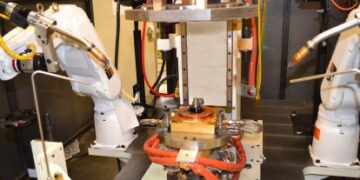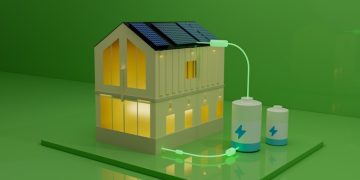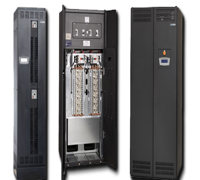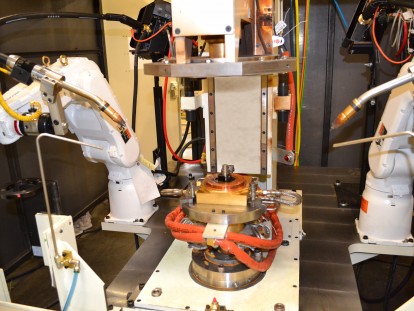Arc welding has become a cornerstone of modern metal fabrication. From towering skyscrapers to delicate medical instruments, arc welding machines join metals with unmatched precision and strength. This article delves into the world of arc welding machine manufacturing, exploring the intricate processes behind these powerful tools, the advantages they offer over other methods, and crucial factors to consider when selecting a supplier.
From Raw Materials to Molten Metal: The Arc Welding Machine Manufacturing Process
The manufacturing of arc welding machines involves a complex dance of engineering and technology. Here’s a breakdown of the key stages:
- Component Sourcing: Manufacturers begin by sourcing high-quality components like transformers, rectifiers, control boards, welding cables, and torches. Reputable suppliers ensure the reliability and performance of the final product.
- Metal Fabrication: Sheet metal is transformed into the machine’s housing and internal components using techniques like cutting, bending, and welding. Precision and quality control are paramount at this stage.
- Transformer Assembly: The heart of the machine, the transformer, is meticulously assembled. It steps up the voltage of incoming power, providing the high currents needed for creating the welding arc.
- Power Electronics Integration: Rectifiers convert the alternating current (AC) from the transformer to direct current (DC) for specific welding processes that require DC power. Control boards are integrated, allowing for precise control of welding parameters like current, voltage, and wire feed speed.
- Wire Feed System Design: For processes like Gas Metal Arc Welding (GMAW) or Flux-Cored Arc Welding (FCAW), a wire feed system is integrated. This system continuously feeds electrode wire into the weld pool, maintaining a stable arc.
- Torch Assembly: The welding torch, a critical component that directs the welding current and shielding gas (if applicable), is carefully assembled.
- Testing and Quality Control: Rigorous testing is performed throughout the manufacturing process. This ensures the machine meets safety standards, delivers the promised power output, and functions flawlessly under various welding conditions.
- Painting and Final Assembly: The machine receives a protective paint coating, and final assembly takes place, incorporating any additional features like cooling systems, control panels, and user interfaces.
This is a simplified overview, and the specific processes may vary depending on the complexity and type of arc welding machine being manufactured.
Beyond the Sparks: Advantages of Arc Welding Machines Compared to Other Joining Methods
Arc welding machines offer numerous advantages over other metal joining methods:
- Versatility: Arc welding can join a wide variety of metals, including steel, stainless steel, aluminum, and even exotic materials like titanium. This unmatched versatility makes them ideal for a vast array of applications.
- Strength: Arc welds create strong, permanent bonds between metals. This makes them ideal for applications requiring high structural integrity, such as bridges, buildings, and pressure vessels.
- Penetration: Arc welding offers deep weld penetration, allowing for strong welds even on thicker materials. This is crucial for applications where structural integrity is paramount.
- Portability: Many arc welding machines are relatively portable, allowing for on-site welding in various locations. This flexibility is beneficial for construction, repair work, and field applications.
- Automation Potential: Arc welding machines can be automated using robots or CNC (Computer Numerical Control) technology. This allows for high-volume production, repetitive tasks, and consistent weld quality.
- Cost-Effectiveness: While the initial investment in an arc welding machine can be higher than some joining methods, the long-term cost-effectiveness is undeniable. The durability of arc welds and the variety of applications they cater to make them a worthwhile investment.
Compared to other methods like riveting or soldering, arc welding offers superior strength, deeper penetration, and the ability to join a wider range of metals. While processes like brazing can be suitable for specific applications, arc welding generally offers a more robust and versatile solution.
The Science Behind the Sparks: The Working Principles of Arc Welding
Arc welding utilizes the intense heat generated by an electric arc to melt and fuse the edges of two metal workpieces. Here’s a breakdown of the basic principles:
-
Power Source:
The arc welding machine provides the electrical power for the welding process. This power can be AC or DC, depending on the specific welding process.
-
Electrode:
The electrode acts as a conductor for the welding current. In most cases, it’s a consumable electrode, meaning it melts and contributes metal to the weld pool. Common electrode types include solid wires, flux-cored wires, and coated electrodes (used in Shielded Metal Arc Welding or SMAW).
-
Arc Creation:
When the electrode touches the base metal (the workpiece being welded) and is then withdrawn slightly, an electrical arc is formed. The intense heat of the arc melts the electrode and the base metal at the point of contact, creating a molten pool of metal called the weld pool.
-
Shielding Gas :
In some processes like GMAW, a shielding gas is used to protect the molten metal from contamination by atmospheric gases like oxygen and nitrogen. This shielding gas, typically inert gases like argon or helium, creates a protective atmosphere around the weld pool, preventing oxidation and ensuring a clean, high-quality weld.
-
Solidification:
As the welding torch moves along the joint, the molten metal in the weld pool cools and solidifies, creating a strong bond between the two pieces of metal.
The specific details of the welding process can vary depending on the type of arc welding being used. Here are some of the most common arc welding processes:
-
Shielded Metal Arc Welding (SMAW):
Also known as stick welding, SMAW uses a coated consumable electrode that provides shielding gas and additional filler metal. It’s a versatile process suitable for a wide range of metals and applications.
-
Gas Metal Arc Welding (GMAW):
Also known as MIG welding, GMAW uses a continuous solid wire electrode and a separate shielding gas to protect the weld pool. It offers fast welding speeds and is ideal for thin to medium-thickness metals.
-
Flux-Cored Arc Welding (FCAW):
Similar to GMAW, FCAW uses a continuous electrode filled with flux. This flux provides shielding gas and additional filler metal, making it suitable for outdoor applications where wind might affect the external shielding gas.
-
Tungsten Inert Gas (TIG) Welding:
This process uses a non-consumable tungsten electrode and a separate shielding gas. The filler metal, if needed, is added manually. TIG welding offers a high degree of control and is ideal for creating clean, high-quality welds on thin materials.
Understanding the working principles and different types of arc welding machines allows users to select the most appropriate process for their specific needs.
Choosing the Right Partner: Factors to Consider When Selecting an Arc Welding Machine Supplier
Selecting the right arc welding machine supplier is crucial for a successful and productive welding operation. Here are some key factors to consider:
- Reputation and Experience: Look for a supplier with a strong reputation for quality and reliability. Years of experience in the industry demonstrate their expertise and ability to provide dependable products.
- Product Range: Ensure the supplier offers a variety of arc welding machines to cater to your specific needs. This might include machines for different welding processes, power outputs, and portability requirements.
- Technical Support and Service: Reliable after-sales support and readily available service are essential. The supplier should have qualified technicians to answer your questions and provide assistance with troubleshooting or repairs.
- Training and Education: Some suppliers offer training programs on arc welding equipment and techniques. Investing in proper training for your welding personnel can enhance their skills and ensure safe and efficient operation of the machinery.
- Spare Parts Availability: Readily available spare parts are crucial for maintaining your arc welding machine and minimizing downtime. Choose a supplier that can provide the necessary parts promptly.
- Compliance and Safety Standards: Ensure the arc welding machines comply with relevant safety standards and regulations. Reputable suppliers prioritize safety and provide user manuals with clear instructions for safe operation.
- Price and Value: While cost is a factor, consider the overall value proposition. Look for a supplier offering a good balance between price, features, quality, and long-term reliability.
By carefully considering these factors, you can choose a reliable supplier who can provide the right arc welding machine and the necessary support to ensure your welding operations are successful and efficient.
Conclusion: A Powerful Tool for the Future
Arc welding machines have revolutionized metal fabrication, enabling the creation of structures and products that were once unimaginable. Their versatility, strength, and cost-effectiveness make them an invaluable tool for a vast array of industries. As technology continues to evolve, arc welding machines will undoubtedly become even more sophisticated and efficient, further solidifying their position as a cornerstone of modern metalworking. By understanding the manufacturing process, the advantages over other joining methods, the working principles, and how to choose the right supplier, you are well-equipped to leverage the power of arc welding and unlock its potential for your projects.
-

































































